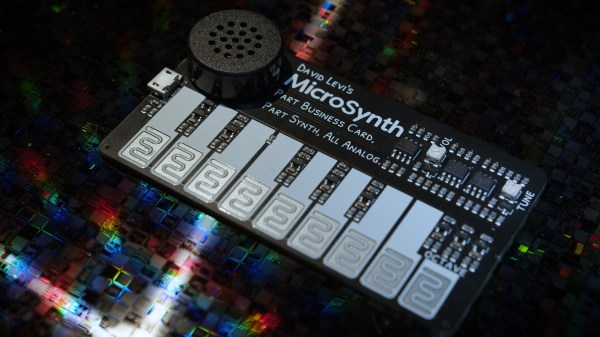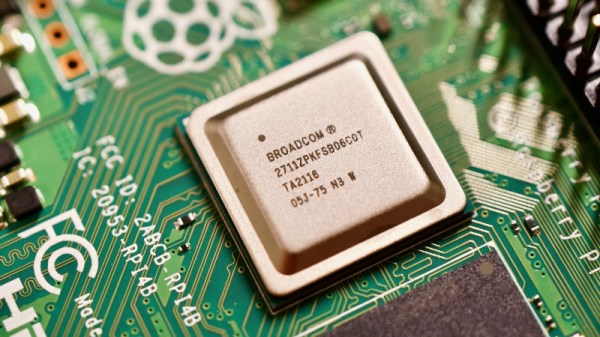While [MicroKits]’ MicroSynth is an all-analog synthesizer that fits on a business card-sized PCB, and he actually does use it to break the ice in business meetings, that’s not really the idea behind this project. Rather, [MicroKits] is keen to get people playing with synths, and what better way than a synth you can build yourself?
There was an ulterior motive behind this project, too: prototyping circuits for a more complete synthesizer. Thus, the design is purposely very simple — no microcontrollers, no logic chips, and not even a 555 to be found. It doesn’t even have buttons; instead, the one-octave keyboard just has interdigitated traces that are bridged by the player’s fingers, forming resistive touchpads. The keyboard interface circuit is clever, too — [MicroKits] uses a pair of op-amps to convert the linear change in resistance across the keyboard to a nearly exponential voltage to drive the synth’s voltage-controlled oscillator (VCO). The video below shows what it can do.
We love projects like these because they show what can be accomplished strictly using analog circuits. We don’t have any problem with other synth designs, mind you — this 555-based dub siren we featured recently was great, too. Continue reading “MicroSynth Mixes All-Analog Fun With A Little Business”


















